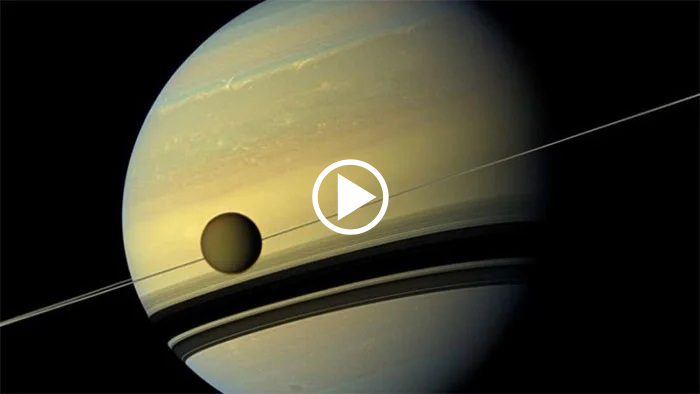The satellites are gradually moving away from the planet on which they orbit.
This happens in the case of the natural Moon – Earth satellite: Each year the Moon moves away from Earth by about 3.8 cm. The same goes for Titan, Saturn’s largest moon: it is moving away from Saturn at a speed of about 11 cm / year, faster than expected.
Studies published in the journal Nature Astronomy (UK) implicate Titan and five other Saturnian moons. Scientists have received new data on the so-called Q coefficient (Tidal Quality Factor) – a coefficient that shows the influence of the gravity of objects in the system on a certain object. It turns out that for Saturn, the Q factor is 100 times smaller than that originally calculated. This means that Titan is moving away from Saturn 100 times faster than expected.
This new discovery is not only important for understanding the future of the Saturn system, but also for understanding its past. The rate of “drift” away from the planet can be used to determine the age and formation of many satellites. In the case of Saturn, the whole system must have evolved faster than previously assumed. “This result brings an important new factor to the question of the age of Saturn’s system and the formation of Saturn’s moons,” said Dr Valery Lainey from PSL University (France), principal investigator.
Titan is located 1.2 million km from Saturn and is one of Saturn’s 82 moons. Until now, scientists have assumed that the more distant satellites depart more slowly; However, a few years ago it was suggested that inner and outer satellites were leaving the planet at the same rate.
The research data is based on observations from NASA’s Cassani probe, which has been monitoring Saturn for 13 straight years. The Cassini mission officially ended in September 2017, but the information gathered by the ship is still used today.


